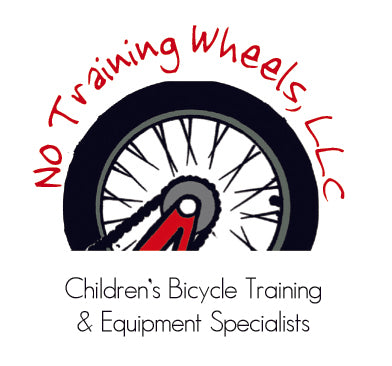Bicycle Fit Assistance - Your Guide to a Perfect Bike Fit
Choosing the right-sized bike is crucial for learning success. In our Q&A guide, you'll discover exactly how to measure for the perfect fit, why proper sizing matters more than "room to grow," and how to spot a bike that will build your child's confidence rather than fear. We break down common sizing mistakes, explain why lighter bikes benefit older beginners, and share smart shopping tips for finding quality used bikes. Whether you're starting with a balance bike or transitioning to pedals, this guide ensures your child's first riding experiences build confidence through proper fit and control.
The Most Common Questions
Q: Should I buy a larger bike they can "grow into"?
A: No - this is a common mistake that can hinder learning. A bike that's too big creates fear, reduces control, and makes learning significantly harder. Start with a bike that fits now; they'll progress to a larger size once they've mastered riding skills.
Q: What are common sizing mistakes to avoid?
A: Avoid these common pitfalls:
- Buying a bike that's too tall in hopes they'll "grow into it"
- Raising the seat too high during learning
- Choosing a bike based on age rather than fit
- Keeping them on a too-small bike after they've mastered riding
Q: Why is bike fit so important for learning?
A: The right bike fit creates confidence and control - essential elements for learning. When children can firmly plant their feet on the ground while seated, they feel secure and in control of their environment, making them more willing to try new skills.
Q: How do I know if a bike fits correctly?
A: Check these key points:
- Child should sit comfortably on the seat
- Feet should be flat on the ground while seated
- Knees should have a slight bend when feet are flat
- Child should be able to easily walk the bike while seated
- Handlebars should be easily reachable without stretching
Q: What about bike weight?
A: For all children and adults lighter bikes significantly improve the riding experience. While quality lightweight bikes can be more expensive new, consider these options:
- Look for used high-quality bikes at garage sales
- Check local thrift stores
- Search online marketplaces
Ask local bike shops about trade-in programs
I never regretted the getting the quality bikes we had. My children enjoyed them much longer than the cheaper bikes we started with. They also stayed mechanically sound longer and were good pass-down bikes within the family or friends in need.
Q: How quickly will my child outgrow their learning bike?
A: Since the balance phase typically happens relatively quickly (weeks to months), it's perfectly fine to start with a smaller, used bike that fits well now. Many children transition to a larger bike once they've mastered riding skills, making used bikes a practical choice for the learning phase.
Q: How do I measure for the right bike size?
A: Follow these steps:
- Have your child stand with shoes on
- Measure inseam from ground to crotch
- Subtract 1-2 inches for proper seat height
- Check that they can sit with feet flat while on the seat and a slight bend in their knees
Q: When should we size up?
A: Consider a larger bike when:
- They've mastered basic riding skills
- Can confidently start and stop
- Show good balance control
- Can easily manage their current bike
- Have outgrown current bike's seat height range
- When their knees are getting close to the handle bars
- You can tell; they just look uncomfortable on the bike
More FAQ Information
-

Bicycle Fit: The Foundation of Success
FAQ - Bicycle Fit GuideProper bike fit isn't just about comfort – it's the key to confident learning. When children can plant their feet firmly on the ground while seated, they feel in control and safe, making the journey to independent riding natural and enjoyable. Explore our detailed guide to ensure your child starts their riding journey with the perfect fit.
-

FAQ Discussion on Bicycle Training for Older Children/Adults and Special Needs
FAQ - Bicycle Training for Specials Needs and Older Children/AdultsOur proven method adapts beautifully to different ages and abilities, because it respects each rider's unique journey. Whether you're helping an older child overcome past fears, supporting someone with special needs in discovering new independence, or finally fulfilling your own dream of riding, our step-by-step approach builds confidence through gentle progression. Success comes at each rider's perfect pace, proving that the joy of cycling truly is accessible to everyone.
-

Teaching Everyone to Ride: A Journey of Possibility - Daniel Has Downs Syndrome
Check out Daniel's inspiring journey below.Daniel's success opened our eyes to the true adaptability of our method. When his family dreamed of sharing bike rides together, we discovered that our step-by-step approach, adjusted for individual needs and timing, could help riders with Down syndrome achieve independent cycling. Since Daniel's breakthrough ride, we've helped dozens of children and adults with Down syndrome experience the joy of riding. Every success story reinforces what Daniel taught us - with the right approach, cycling is truly accessible to all.
Have Questions? We're Here to Help
Every family's journey to riding is unique, and we're committed to supporting yours. While our FAQ covers common questions, we understand you might have specific concerns about your child's situation. Feel free to reach out - if a brief response can help, we'll gladly answer via email. For more complex situations, we can schedule a focused 30-minute consultation. Your experiences and feedback also help us improve - we'd love to hear your suggestions about what resources would make your teaching journey easier. Together, we can keep expanding the ways we help children discover the joy of riding.



